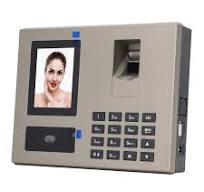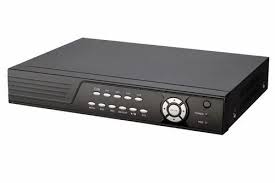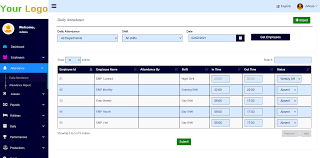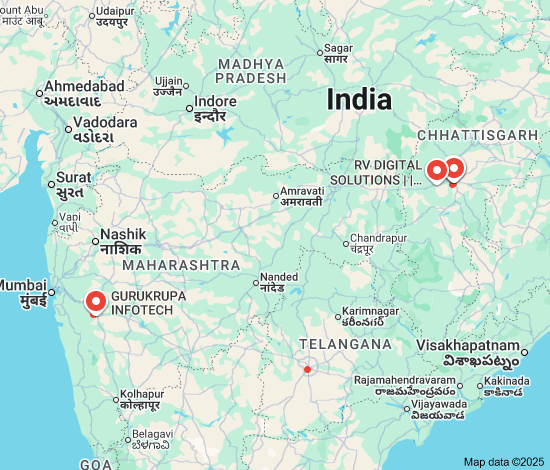Employee Attendance Punching Machine: Streamlining Workforce Management
Employee attendance is a critical aspect of workforce management for any organization. Keeping track of employee working hours, breaks, and absences is essential for payroll processing, performance evaluation, and overall operational efficiency. In this digital age, manual attendance tracking methods are becoming obsolete, paving the way for automated solutions like the Employee Attendance Punching Machine.
The Employee Attendance Punching Machine is a sophisticated device designed to accurately record and monitor employee attendance. By utilizing biometric technology such as fingerprint scanning or facial recognition, these machines ensure precise identification of employees during clock-in and clock-out processes. This eliminates the possibility of proxy attendance and ensures data integrity.
One of the key benefits of the Employee Attendance Punching Machine is its efficiency in recording attendance data in real-time. Employees can quickly punch in and out using their unique biometric identifiers, saving time and simplifying the entire process. This real-time data capture allows supervisors and HR personnel to access up-to-date attendance records instantly, facilitating timely decision-making.
Moreover, the Employee Attendance Punching Machine helps organizations maintain accurate records for compliance purposes. By automating attendance tracking, companies can easily generate detailed reports on employee work hours, overtime, late arrivals, and absenteeism. This data can be invaluable for payroll calculations, performance assessments, and identifying patterns that may require intervention.
Another advantage of the Employee Attendance Punching Machine is its scalability and flexibility. These devices can be integrated with existing HR software systems to streamline data management further. Additionally, they can be customized to accommodate various shift patterns, leave policies, and organizational requirements.
In conclusion, the Employee Attendance Punching Machine offers a reliable solution for modernizing workforce management practices. By leveraging biometric technology and real-time data capture capabilities, organizations can enhance accuracy, efficiency, and compliance in tracking employee attendance. Investing in this automated system not only simplifies administrative tasks but also contributes to overall productivity and operational excellence.
Enhance Workforce Management with an Employee Attendance Punching Machine: 6 Key Benefits
- 1. Accurate tracking
- 2. Time-saving
- 3. Data integrity
- 4. Real-time monitoring
- 5. Compliance support
- 6. Scalability and customization
7 Drawbacks of Employee Attendance Punching Machines
- 1. Privacy Concerns
- 2. Technical Failures
- 3. Costly Investment
- 4. Training Requirements
- 5. Dependency on Power Supply
- 6. Limited Flexibility
- 7. Resistance to Change
1. Accurate tracking
Employee attendance punching machines offer the pro of accurate tracking, ensuring precise recording of work hours and reducing errors and discrepancies. By utilizing biometric technology for clocking in and out, these machines eliminate the possibility of fraudulent practices such as buddy punching or time theft. This accurate tracking not only enhances transparency and accountability but also streamlines payroll processing and compliance management. Organizations can rely on the data captured by employee attendance punching machines to make informed decisions based on real-time attendance records, ultimately optimizing workforce management processes.
2. Time-saving
The time-saving aspect of the Employee Attendance Punching Machine is a significant benefit for organizations. With the ability for employees to swiftly clock in and out using their biometric identifiers, the process becomes streamlined and efficient. This not only saves valuable time for employees as they can quickly record their attendance, but also reduces administrative burden on HR personnel who no longer have to manually track and calculate attendance data. Overall, the time-saving feature of the Employee Attendance Punching Machine contributes to improved productivity and operational efficiency within the organization.
3. Data integrity
Biometric technology employed in the Employee Attendance Punching Machine ensures impeccable data integrity by eliminating the risk of proxy attendance. With biometric identifiers such as fingerprint scanning or facial recognition, each clock-in and clock-out event is tied to a specific employee, leaving no room for fraudulent practices. This foolproof system guarantees data accuracy and reliability, providing organizations with trustworthy attendance records for payroll processing, compliance reporting, and performance evaluation.
4. Real-time monitoring
The real-time monitoring feature of the Employee Attendance Punching Machine empowers supervisors with immediate access to current attendance records, facilitating prompt decision-making and intervention when necessary. By being able to view up-to-date data instantly, supervisors can effectively manage workforce attendance, address attendance issues promptly, and make informed decisions based on real-time information. This pro ensures that any discrepancies or concerns regarding employee attendance can be identified and resolved swiftly, contributing to enhanced operational efficiency and productivity within the organization.
5. Compliance support
Automated attendance tracking through the Employee Attendance Punching Machine provides valuable compliance support to organizations by ensuring the maintenance of precise records in accordance with labor regulations and policies. By eliminating manual errors and unauthorized practices like buddy punching, this system helps companies uphold compliance standards effectively. The automated data capture feature facilitates the generation of detailed reports on employee attendance, work hours, and leave patterns, enabling organizations to demonstrate adherence to regulatory requirements with confidence. This proactive approach not only streamlines record-keeping processes but also minimizes the risk of non-compliance penalties, fostering a culture of transparency and accountability within the workforce.
6. Scalability and customization
Employee attendance punching machines offer the significant advantage of scalability and customization. These devices can easily adapt to accommodate different shift patterns, leave policies, and organizational requirements. Whether an organization operates on a standard 9-to-5 schedule or has rotating shifts, the attendance punching machine can be tailored to meet specific needs. This flexibility allows companies to efficiently manage workforce attendance regardless of their operational structure, making it a versatile solution for businesses of all sizes and industries.
1. Privacy Concerns
Privacy Concerns: One significant drawback of implementing an Employee Attendance Punching Machine is the potential privacy concerns it raises among employees. The collection and storage of biometric data, such as fingerprints or facial recognition patterns, may make some employees feel uneasy about the security and potential misuse of their personal information. This discomfort can lead to a lack of trust in the system and apprehension about how their biometric data is being handled, stored, and protected. Organizations must address these privacy concerns transparently and ensure strict data protection measures to alleviate employee apprehensions and maintain a positive work environment.
2. Technical Failures
Technical Failures: Malfunctions or technical issues with the punching machine can lead to inaccurate attendance records. When the employee attendance punching machine encounters glitches or malfunctions, it can compromise the reliability of attendance data. Inaccurate recording of clock-in and clock-out times due to technical failures may result in discrepancies in payroll calculations and employee performance evaluations. Moreover, resolving technical issues with the punching machine can be time-consuming and disruptive, causing delays in attendance tracking and creating frustration among employees and management alike. It is essential for organizations to have contingency plans in place to address technical failures promptly and ensure the integrity of attendance records.
3. Costly Investment
Implementing and maintaining an employee attendance punching machine can pose a significant financial challenge for small businesses due to the costly investment involved. The initial setup costs, including purchasing the hardware, software, and installation services, can strain limited budgets. Additionally, ongoing maintenance expenses, software updates, and technical support fees can further add to the financial burden. For small businesses operating on tight margins, allocating resources towards implementing an attendance punching machine may divert funds from other critical areas of operations. This cost factor highlights a notable drawback of adopting such technology for attendance tracking in smaller enterprises.
4. Training Requirements
Training Requirements: One notable drawback of employee attendance punching machines is the need for training both employees and administrators on how to use and manage the system effectively. Implementing a new technology like a punching machine may require initial training sessions to familiarize users with the device’s functions, operation, and troubleshooting procedures. This training can consume valuable time and resources, especially in organizations with a large workforce or multiple locations. Additionally, ongoing support and refresher training may be necessary to ensure that all users maintain proficiency in using the punching machine accurately, which can add to the overall cost and complexity of implementing this technology.
5. Dependency on Power Supply
Dependency on Power Supply: The punching machine relies on electricity, which can be a drawback in case of power outages or disruptions. In situations where there is a power failure, employees may face challenges in recording their attendance accurately, leading to potential discrepancies in attendance data. This dependency on a consistent power supply introduces a level of vulnerability to the system, as any interruption in electricity can hamper the smooth functioning of the attendance tracking process. Organizations need to have contingency plans in place to address such instances and ensure minimal impact on attendance recording during power-related issues.
6. Limited Flexibility
Some punching machines may pose a challenge due to their limited flexibility in accommodating unique working arrangements or shift patterns. This lack of adaptability can be a significant con for organizations with non-traditional work schedules or employees working in shifts outside the standard 9-to-5 framework. In such cases, the rigidity of the attendance punching machine may hinder accurate tracking of employee hours and lead to discrepancies in attendance records. It is crucial for businesses to consider this limitation when evaluating the suitability of an attendance punching machine for their workforce management needs to ensure seamless integration with diverse working arrangements.
7. Resistance to Change
Resistance to Change: Employees accustomed to traditional attendance tracking methods may resist transitioning to an automated system. The introduction of an Employee Attendance Punching Machine can lead to apprehension and reluctance among employees who are comfortable with manual processes. Some may view the new system as intrusive or unnecessary, fearing potential errors or privacy concerns associated with biometric data collection. Overcoming this resistance requires effective communication, training, and reassurance about the benefits and security measures of the automated system. Encouraging employee engagement and addressing concerns proactively can help facilitate a smooth transition towards embracing technological advancements in attendance tracking.




